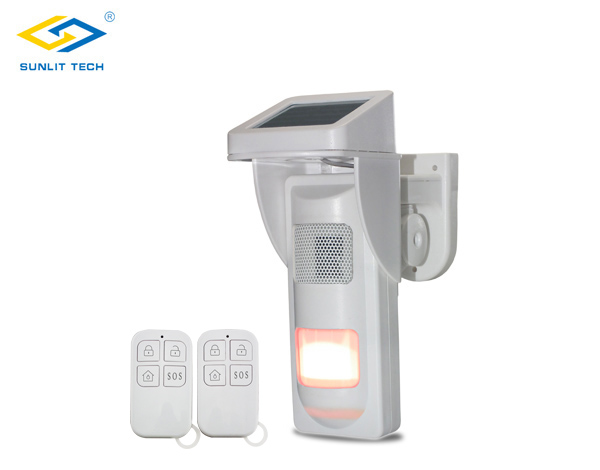What is a PIR motion sensor?
Motion sensor alarms, also known as motion detectors or motion detector sensors, are crucial components in modern security systems. These devices play a pivotal role in safeguarding properties by detecting movement within their designated areas. In this comprehensive guide, we delve into the functionality, types, and applications of motion sensor alarms, shedding light on their importance in enhancing security measures.
1. Functionality of Motion Sensor Alarms
Motion sensor alarms operate based on detecting changes in infrared radiation, microwaves, or ultrasonic waves within their coverage area. These sensors are designed to trigger an alarm or activate surveillance systems upon detecting movement. The mechanism typically involves comparing the current state with a predefined baseline to identify anomalies indicative of motion.
2. Types of Motion Sensor Alarms
Passive Infrared (PIR) Sensors: PIR sensors are the most common type of motion detectors, widely utilized in both residential and commercial security systems. These sensors detect body heat emitted by humans or animals, making them highly effective for indoor and outdoor applications.
Microwave Sensors: Microwave motion detectors emit microwave pulses and analyze the reflections to detect motion. They are suitable for environments where PIR sensors might be ineffective, such as areas with frequent temperature fluctuations.
Ultrasonic Sensors: Ultrasonic motion sensors emit high-frequency sound waves and measure the reflections to detect movement. While less common than PIR and microwave sensors, they offer precise detection in certain environments, particularly those with obstacles or partitions.

3. Advantages of Motion Sensor Alarms
Motion sensor alarms offer several advantages over traditional security measures, making them indispensable components of modern surveillance systems.
Enhanced Security: By detecting unauthorized movement, motion sensor alarms provide an additional layer of security, complementing locks and surveillance cameras.
Cost-Effectiveness: Compared to continuous surveillance, motion sensor alarms conserve energy and reduce operational costs by activating only when motion is detected.
Quick Response: Instantaneous activation ensures prompt response to potential security threats, enabling timely intervention and mitigation of risks.
Versatility: Motion sensor alarms can be integrated into various security systems, including burglar alarms, lighting systems, and CCTV cameras, enhancing overall security infrastructure.

4. Applications of Motion Sensor Alarms
Motion sensor alarms find diverse applications across residential, commercial, and industrial settings, contributing to the safety and security of occupants and assets.
Home Security Systems: In residential settings, motion sensor alarms are often integrated with burglar alarms to detect intruders and unauthorized entry.
Outdoor Lighting: Motion-activated lights equipped with sensors illuminate outdoor areas upon detecting movement, enhancing visibility and deterring potential intruders.
Industrial Safety: Motion sensor alarms are utilized in industrial environments to detect unauthorized access to restricted areas and ensure workplace safety.
Energy Conservation: In commercial buildings, motion sensor alarms control lighting and HVAC systems, optimizing energy usage by activating only when occupants are present.
Motion sensor alarms play a pivotal role in modern security systems, offering enhanced protection against unauthorized access and intrusions. With their advanced technology and versatile applications, these devices are indispensable components of comprehensive security infrastructure. By understanding the functionality, types, and advantages of motion sensor alarms, stakeholders can make informed decisions to bolster security measures and safeguard properties effectively.
motion sensor alarms motion detectors motion detector sensor
 简体中文
简体中文
